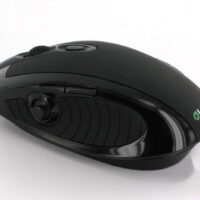I’ve always had a little bit of a problem with sustainability software. You jam some criteria into it and it throws a comparison of materials, location, the impact your choices have on the environment, and a pretty report you can give to your boss or client to prove you’ve done your research. The thing is, they leave out a lot of variables. I spoke with Prashant Jagtap of Trayak who has a product named EcoDesigner. It’s a plugin to bring Lifecycle Assessment (LCA) to Solid Edge and it might be changing how we stuff Sustainability into our designs.
Solid Edge EcoDesigner
First, here’s a quick overview of the product. A lot like other LCA software and also different. For one, it’s looking at a lot of other variable of the product lifecycle. Have a look.

Now, where I have issues with LCA software like this is on material, material properties and material availability. They don’t take that into account very well.
For instance, it may be better to make something out of 2024-T4 rather 301 (if you can ever get that specific), but does it make sense from a structural standpoint? Does the LCA software have the data for that material? and is it an available material? I know this get into the larger scope of lifecycle, but isn’t that purpose of PLM? It’s the overall process, and making the product better through each step of the process.
So, I asked Prashant Jagtop provide some clarity here and tell how EcoDesigner approaches these other variables.
- How is EcoDesigner different from other life cycle assessment software?
EcoDesigner brings LCA into Solid Edge and operates directly on Parts and Assemblies in the designer’s environment. EcoDesigner is unique in three important ways:
- Flexible: EcoDesigner provides not just one but nearly all well-known and accepted impact assessment methods. This allows customers to measure a range of indicators depending on what’s most relevant to their business and their desired level of detail. Customers also have the choice to roll all these indicators into “single scores” for ease of comparison or optimization.
- Extensible: EcoDesigner is the only CAD integrated software that allows designers to add their proprietary materials and associated sustainability data into the analysis
- Collaborate: EcoDesigner is also the only CAD integrated software that allows designers to collaborate with internal and external sustainability experts to create more detailed LCA and calculate broader sustainability scores.
- What can be done to improve the overall sustainable aspects of design?
Very few designers are aware of the environmental impact of their product designs. If designers are able to understand the baseline environmental footprints of their products and can analyze what can be done to reduce these it would drastically improve the overall sustainable aspects of design. Obviously “lean” design principles just like “lean” manufacturing is definitely a good start. Beyond that, good choice of materials and manufacturing processes, choice of recycled materials, attention to recyclability of product at end of life all these can improve sustainable designs.
- What are a few practical applications that EcoDesigner has been used for?
EcoDesigner is being used to analyze components in a new environmentally friendly car. It is also being used for designing green furniture.
- How does EcoDesigner interface with Solid Edge and more specifically Teamcenter to complement (save money, use inventory, etc.) the product lifecycle?
EcoDesigner is tightly integrated into Solid Edge for performing the LCA. Assembly configurations, number of parts, material and physical properties are automatically derived from the solid model. After designer performs a LCA, EcoDesigner stores the environmental information with the parts and assemblies. Within Teamcenter this information is available and can be combined with broader sustainability information to calculate additional sustainability metrics or scores. For example you can track the amount of post-consumer recycled plastic that is used in your products. You can track amount of bio-renewable material used in your product.
- How can engineers and designers use EcoDesigner to improve/optimize existing products?
Engineers and Designers can analyze & baseline the initial environmental impact of the product. Then, they can experiment with different materials, weights, manufacturing processes, recycled materials and or transportation distances (aka sourcing decisions) and compare results with baseline scenario. This will guide them to improve/optimize their existing products.
Prashant agrees that we’ve got a way to go, that today there is no easy way to “optimize” material choice using multiple properties and that we need to use many more parameters that are relevant and important besides the existing LCA indicators. With software like EcoDesigner, it seesm we’re inching closer to smarter product design.




![6 Types of Civil Engineering Drawings [Detailed Guide]](https://www.solidsmack.com/wp-content/uploads/2023/12/Civil-Engineering-Drawings-270x180.jpeg)

